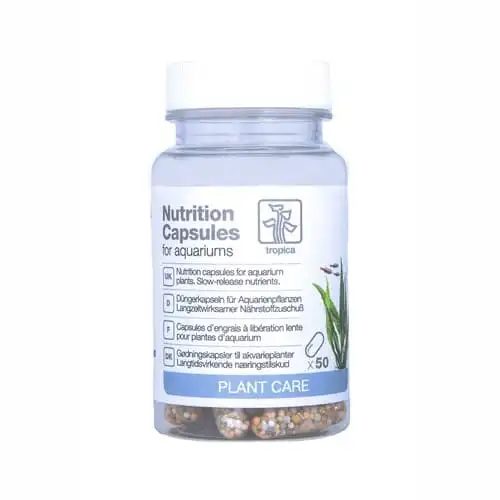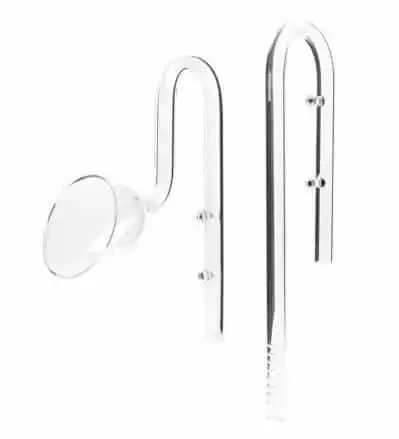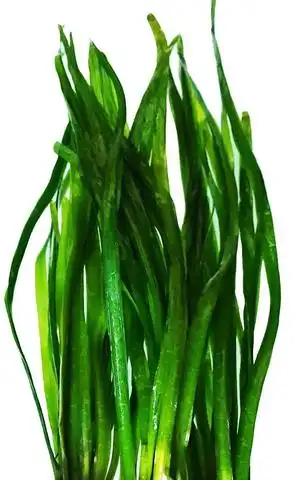Thank you for visiting! By the way… any links on this page that lead to products on Amazon and other stores/partners are affiliate links Aquarium Store Depot earns a commission if you make a purchase.
If you like plants that grow fast and look great, Vallisneria deserves your attention. These plants look fantastic in the background, and sometimes even the midground of planted tanks. If they have one weakness, it is that they grow a little too fast and too big for some tanks.
Read on to learn about Vallisneria care, and find out if this is the right plant for you!
Species Overview
| Scientific Name | Vallisneria spiralis, V. americana, V. nana |
| Common Names | Val, Eelgrass, Tape Grass, Jungle Val |
| Family | Hydrocharitaceae |
| Origin | Africa, North America, South America, Asia, Australia, Europe |
| Skill Level | Easy |
| Lighting | low-high, 40-200PAR (Umols) |
| Tank Placement | Background |
| Flow Rate | Moderate, High |
| Temperature Range | 59 – 86°F |
| Height | 12 – 72+ inches |
| pH Range | 6.5 – 8.5 |
| Proprogation | Runners from main plant |
| Growth Rate | Fast |
| Feed Type | Root Feeder |
| Co2 Requirement | Optional |
Origins And Habitat
The Vallisneria plant takes its name from Italian scientist Antonio Vallisneri from the 18th century1. They are really widespread aquatic plants, and one species or another can be found growing on every continent of the world except Antarctica.
These are fully aquatic plants that cannot be grown emersed. In nature, they grow in a wide range of habitats, from still waters to fast-flowing river environments and at depths of as much as 20 feet.
Like many other aquatic species, Vallisneria plants have been spread to many different parts of the world. Always take care to not let your aquarium plant trimmings get into local waterways.
What Does Vallisneria Look Like?

Vals are tall rosette aquatic plants that have a very grass-like appearance. The leaf margins have small spines, and the shape of the leaves is pretty variable, being either straight, twisted, or spiraled.
The leaf width also varies and can be strap-like up to an inch across or very narrow, almost like Hairgrass (Eleocharis). Vallisneria leaves are light green and grow upwards, reaching as long as 7 feet in some types.
These plants grow from green runners or stolons, which they send out over the top of the substrate before sending out roots. When they grow out of the water they will have flowering and seed production
Placement And Lighting
Vallisneria is most often grown as a background plant. Another interesting way to use this plant in the aquascape is to grow it on one end of a long planted tank, with the current pushing the leaf tips towards the center of the aquarium.
Smaller forms with twisted and spiral leaves can be very effective if grown in bunches in the mid-ground of aquariums. An important factor to consider before adding this plant to any aquascape is just how fast it can spread.
If you’re looking for a low-maintenance aquascape that doesn’t need any trimming, Vallisneria might not be the plant for you. These plants have a habit of sending runners out and popping up all over the place.
It is one of the best aquatic plants for really tall tanks, however, and jungle vals, in particular, are one of the few good options available. If you like the idea of a densely planted aquarium, this one is for you.
Vallisneria plants don’t need especially strong planted tank lighting. They will grow best under moderate to high lighting.
Corkscrew Vallisneria in particular tends to prefer brighter light than other forms. Although they can be grown under the same moderate lighting, stronger light will encourage better leaf color and twisting in this form.
What Are Good Tank Mates?
The leaves of Vallisneria spiralis and the other vals are hard and difficult to digest. This makes them pretty unattractive to hungry herbivorous fish.
This is great news because it means they are one of the few plants that can be kept with plant-eaters.
Good Tank Mates

Vals make great tank mates for most tropical and cool water freshwater fish, including African cichlids, which is great because these fish can be pretty destructive when kept with many other aquarium plants. Some other great options include:
Fish Species To Avoid
Although goldfish are known to feed on this plant, vals are fast-growing and can probably keep up with the demand. This is still a plant that should be used with caution in goldfish tanks though. Avoid fish that prefer lower pH like:
- Clown Loach
- Tropical Tetras like Neon Tetras
- Harlequin Rasboras
Feeding and Fertilization
Vallisneria plants are root feeders which means they gain almost all the nutrients they need to live and grow from the substrate. Vals are not particularly heavy feeders and do well with just the excess nutrients from fish waste and food in the system.
For improved plant growth, however, using root tabs as an aquarium fertilizer is advised, especially if you are growing your vals in an inert material like aquarium sand or gravel. They also do better with an iron rich fertilizer.
How Much And How Often To Feed
Seachem Flourish or Tropical Tabs root tabs are a great, long-lasting source of nutrition for your plants that only need to be replaced after 3 or 4 months in most situations.
These dry tablets should be spaced at a distance of 4-6 inches from each other for the evenest spread, but you can also place them near the root zones of each plant.
Tropica Root Tabs are superior to many store brand root tabs like API. Roots tabs created for the professional aquascaper!
CO2 Injection
Vals don’t need added carbon dioxide injection for good plant growth in the aquarium but they will definitely look and grow better in a high-tech setup. If you do run CO2 in your tank, just make sure to keep your levels to 30 ppm or less for the safety of your livestock.
It is best to have the system switch off at the same time as your lights since your Vallisnerias won’t be able to use the CO2 in the absence of light.
Types
There are a few different species of Vallisneria available in the aquarium hobby, but telling them apart to a species level can be very tricky. This is mostly because the plants can grow in different forms depending on the water conditions they are in.
- Vallisneria americana is a common species in the hobby, that tends to be larger and have straighter leaves.
- Vallisneria spiralis is a great species for small to medium size aquariums because it usually grows to about 20 inches or so in height.
- Vallisneria nana- This Australian species grows slightly less vigorously than the others. It is popular for its very narrow leaves, which give it the appearance of a taller hairgrass.
- Jungle Val- This large eelgrass is also known as ‘Gigantea’. Jungle Val is actually a form of V. americana and is known for its extra-long leaves that can grow to over an inch across. This is a great plant for aquarists with large, tall aquariums.
Care
Vallisneria spiralis and the other vals are very easy aquatic plants to care for if they are planted in a suitable environment. In fact, happy vals grow shoots and spread so fast that they can really keep the aquarist busy, especially if they are trying to keep it in just one part of the aquarium.
One important piece of equipment that you’re going to want to invest in is a decent pair of aquascaping scissors for trimming and removing unwanted stolons from the plant. Although you can get by with just one pair, a straight set is most useful for cutting the runners while a curved pair will work best for trimming the leaf blades.
Fortunately, these scissors can be picked up pretty cheap and often come as part of neat aquascaping combo kits. When it comes to Vallisneria, they are undemanding in care, but can be demanding for maintenance due to their growth.
Planted Tank Parameters
Vallisneria is a pretty easy-going plant that does well in a variety of parameters. They do prefer harder alkaline water and can even survive in slightly brackish conditions. A GH of 4-18 and a pH of 6.5-8.5 is ideal. In terms of water temperature, anything between 59-86 °F is acceptable. Due to their wide range, they do not need an aquarium heater. You only need on if you have tropical fish like a Betta Fish.
Water Quality
Vallisneria is not a plant that is particularly sensitive to water quality. Nevertheless, the aquarist should always strive to maintain a healthy aquatic environment by performing regular partial water changes and routine aquarium maintenance.
Filtration
You do not need any particular type of filter to successfully grow Vallisneria in your aquarium. Power filters that create good water movement are a good choice, however, because these aquatic plants do well in a bit of current.
Whichever type of filter you choose, a good rule of thumb is to select a model that can process the total volume of your aquarium 4 to 6 times every hour.
Flow
Depending on the species, Vallisneria can grow in anything from still water to surprisingly strong-flowing rivers. This makes them adaptable to just about any flow conditions that you might have.
Vallisneria looks great with a bit of movement and a tall Jungle Val with its leaves all bent over in the same direction at the top of the tank can make for a very attractive and interesting display. You can distribute flow really well with the use of a Lily Pipe. This will give the plant more natural movement in the planted aquarium.
A lily pipe is a great way to utiliize high flow canister filters in your aquascape while distributing the flow evenly throughout
Aquarium Maintenance
Aquarium maintenance is a crucial side of keeping a healthy planted aquarium. Apart from performing your regular water change, you should also keep your substrate vacuumed and your glass clean of algae.
A common mistake that beginners make is to clean out their filters or replace the filter media cartridges too often. While it may seem like a great idea to keep your filter sponge squeaky clean, the fact is that your filter is home to vast numbers of pretty sensitive bacteria.
These bacteria are absolutely vital for converting harmful chemicals in the water into safe ones. For this reason, rinse out your filter media rather than replacing it when it becomes clogged up.
Use the old water from a water change to rinse the sponge because chemicals in tap water can kill the bacteria.
Testing Water Conditions
The best way to know if you have a healthy colony of beneficial bacteria in your filter and if you’re performing frequent and big enough water changes, is to test your water regularly with test kits.
Keep a close eye on your levels of ammonia and nitrites in particular because these are the most dangerous for your fish and animals.
Apart from these biological parameters, your test kit should be used to measure your parameters before stocking new plants or fish. Test kits are inexpensive but a very valuable addition to your aquarium equipment.
How To Set Up Your Aquarium Tank
Vallisneria is a large aquarium plant that grows from a well-developed root system. Use a sandy substrate of 3 or 4 inches deep. Plain, washed gravel or aquarium sand works well, or you can use special enriched aquarium soils for improved growth.
Vals look amazing when they grow tall and sweep over the surface of the tank, but they will shade out any other plants growing below, and leaves that grow out of the water and dry out die. For this reason, Vallisneria (especially Jungle Val) is best grown in tall tanks.
Although the smaller types like spriralis and tortifolia can be grown in smaller tanks, 15 gallons or so is probably the bottom limit in terms of tank size. Any smaller and the leaves are likely to grow too long and the plants can easily take over the floor space.
Here is a great video by TheGreenMachine on how to prep Vallisneria for planting.
How To Propagate
Vallisneria is such an easy plant to propagate that it tends to propagate itself without any help at all!
Vallisneria sends out long stolons that grow new plantlets, before continuing their journey across the top of the substrate and repeating the process. You can let nature take its course or cut the stolons and replant the daughter plants where you like.
Vals grow roots fast, and if you have a capped substrate, or a dirted tank, pulling the plantlets out can get pretty messy. For this reason, you should time it to pull them out once they have a few good roots, but before they grow too large.
Health And Disease
Signs Of Health
Healthy Vallisneria has a bright green color and leaves that are firm but flexible. They will produce fast-growing runners and a strong root system.
Signs Of Ill Health
Vallisneria leaves that are yellow, brown, or transparent are in poor health.
Common Health Issues And Treatment
One common problem that first-time Vallisneria growers have is planting them too deep. Covering the crown of the plant with soil or gravel will result in rotting and melting. The best way to solve this problem is to gently lift the plant up until its crown is exposed and allow it time to recover.
If your light and nutrients are out of balance, hair algae can grow from the leaves of your Vallisneria plant. Although you will have to address the cause of the algae problem, you can trim off the affected leaves with your aquascaping scissors.
Apart from the usual melt that many aquatic plants go through when first adjusting to the new water parameters in your aquarium, trimming can also cause this common problem.
There is always a chance that trimmed leaves will die back, but your best chance of avoiding this is to use a sharp pair of scissors. Dull blades tend to tear, rather than slice, and this causes significant damage that the plants may not be able to repair.
Plant Pests
Sometimes when you bring a new Vallisneria home, you get more than you bargained for. Aquatic invertebrates like worms and aquarium snails can be very common in the facilities where the plants are grown and will often hide amongst the leaves of your plant, before making themselves at home in your tank.
Inspect new live plants carefully and remove any eggs or invertebrates that you find before planting them in your tank.
Where To Buy
Vals are very common plants in the freshwater aquarium trade and are usually very affordable. You should have no problem picking up a few plants at your local fishkeeping shop or pet store.
Buying this aquarium plant can be a bit of a gamble, however, because sometimes the plants are mislabeled and you might not be getting quite what you bargained for. Chat with the salesman a bit to make sure they know their stuff if you shop locally.
Alternatively, buy from a trusted online store who sells a variety of high quality plants. Check out their website for correctly labeled Vallsineria plants of many interesting species and varieties. Shopping online takes the guess work since they will be properly label the plant when you order.
One of the easiest background placement aquarium plants that can be kept. Provides excellent shelter for fish
FAQS
Are they easy to grow?
Vallisneria is a very easy freshwater plant to grow which is why it is so popular with both beginners and more advanced growers. Vallisneria can actually be too easy to grow sometimes, and it will keep you quite busy to keep it from taking over.
Does they need fertilizer?
Vallisneria is a very easy freshwater plant to grow which is why it is so popular with both beginners and more advanced growers. Vallisneria can actually be too easy to grow sometimes, and it will keep you quite busy to keep it from taking over.
Does they need CO2?
Vallisneria spiralis, like the other Vallisneria species, does not need CO 2 to grow well but it will certainly be appreciated by these aquarium plants and improve their rate of growth.
How do I grow them in my aquarium?
To grow Vallisneria, simply set the plant’s roots in the substrate. A 3-inch layer of sand, gravel, or aquarium soil is recommended.
Vallisneria is a fast-growing plant once it becomes established in the aquarium. The plants might go through a period of melt that could last a few days or weeks before bouncing back and starting to grow at their usual speed.
Closing Thoughts
Vallisneria is a really fun plant to grow because of its growth rate and ease of propagation. It’s a great-looking plant that greens up the environment really quickly, creating an underwater jungle that your fish and animals will thrive in.
If you’re looking for a tall, fast-growing background plant, look no further! Got any questions? Leave a comment below and join the conversation!
- About the Author
- Latest Posts
I’m thrilled that you found Aquarium Store Depot! Here you’ll find information on fish, aquariums, and all things aquatics related. I’m a hobbyist (being doing this since I was 11) and here to help other hobbyists thrive with their aquariums! I adhere to a high quality Editorial Process and Review products with real life field usage and practical analysis.








